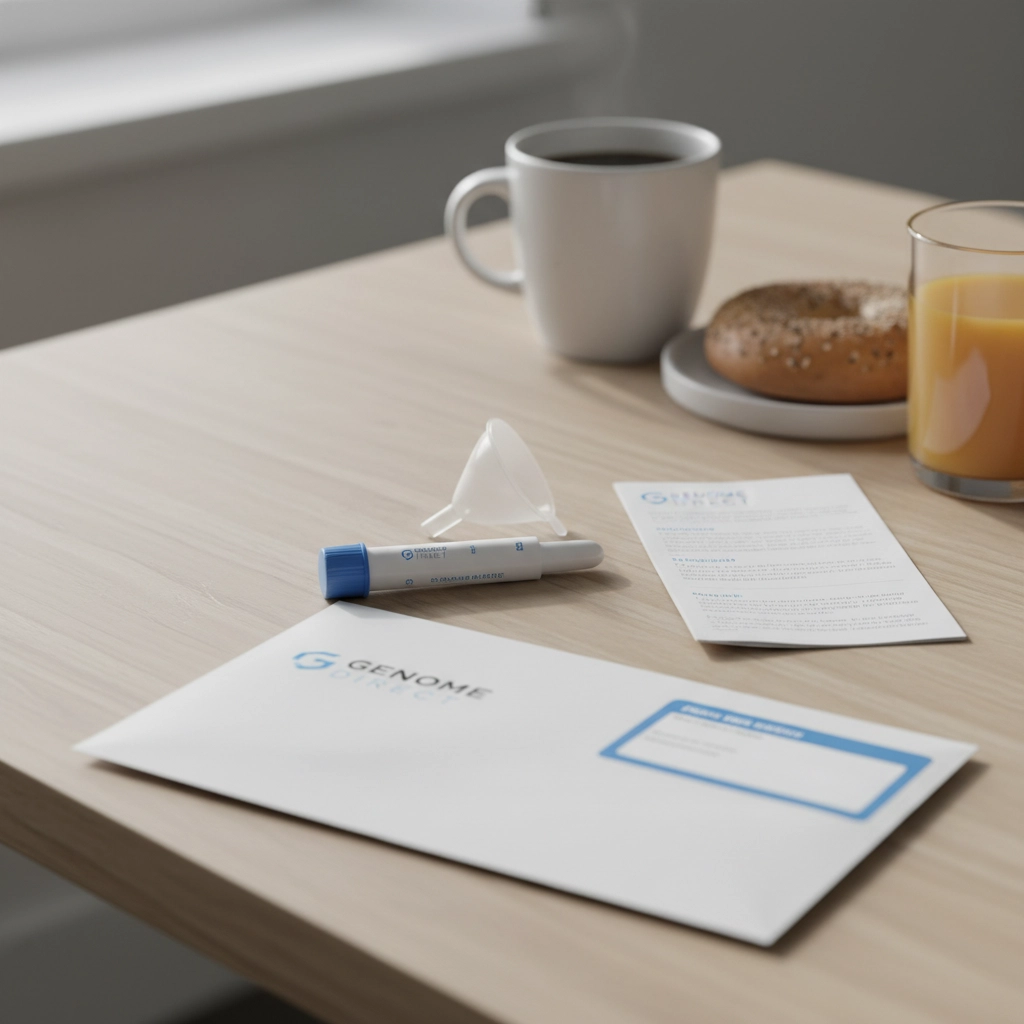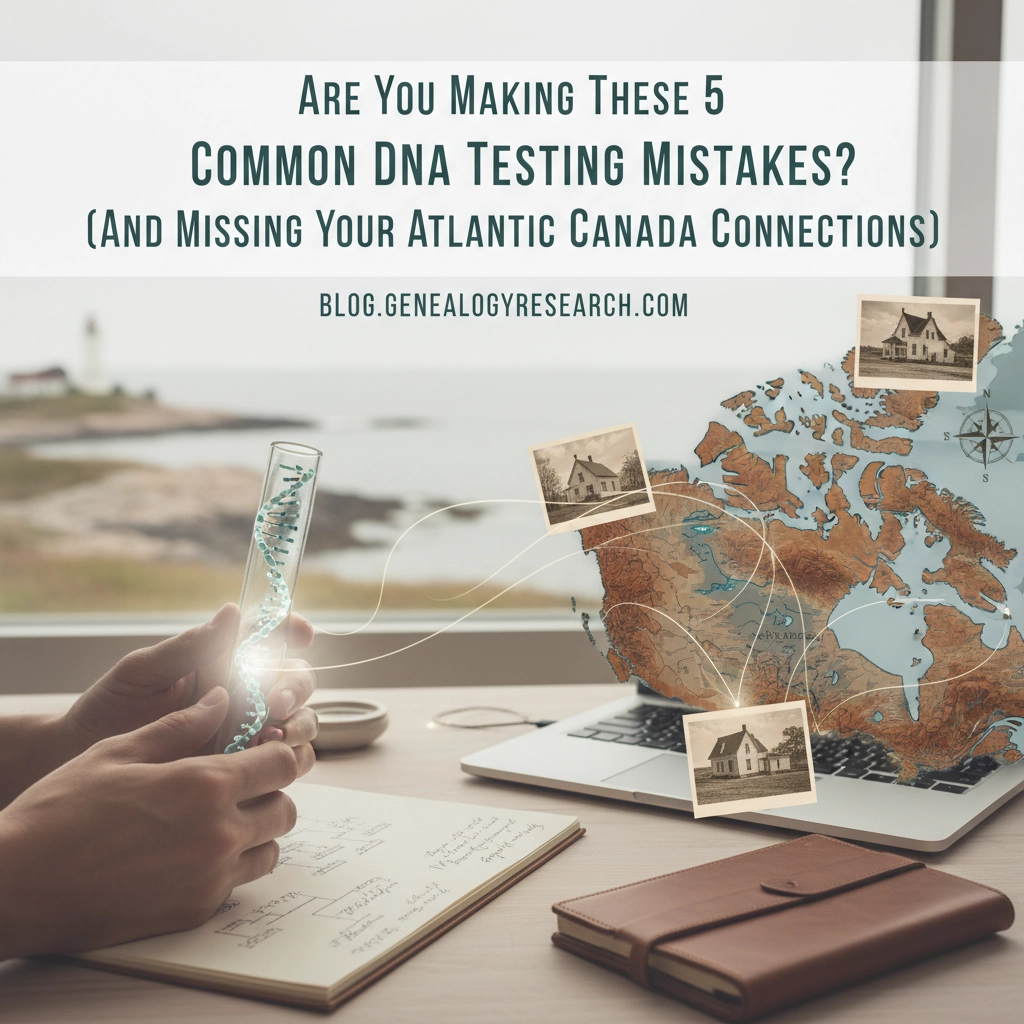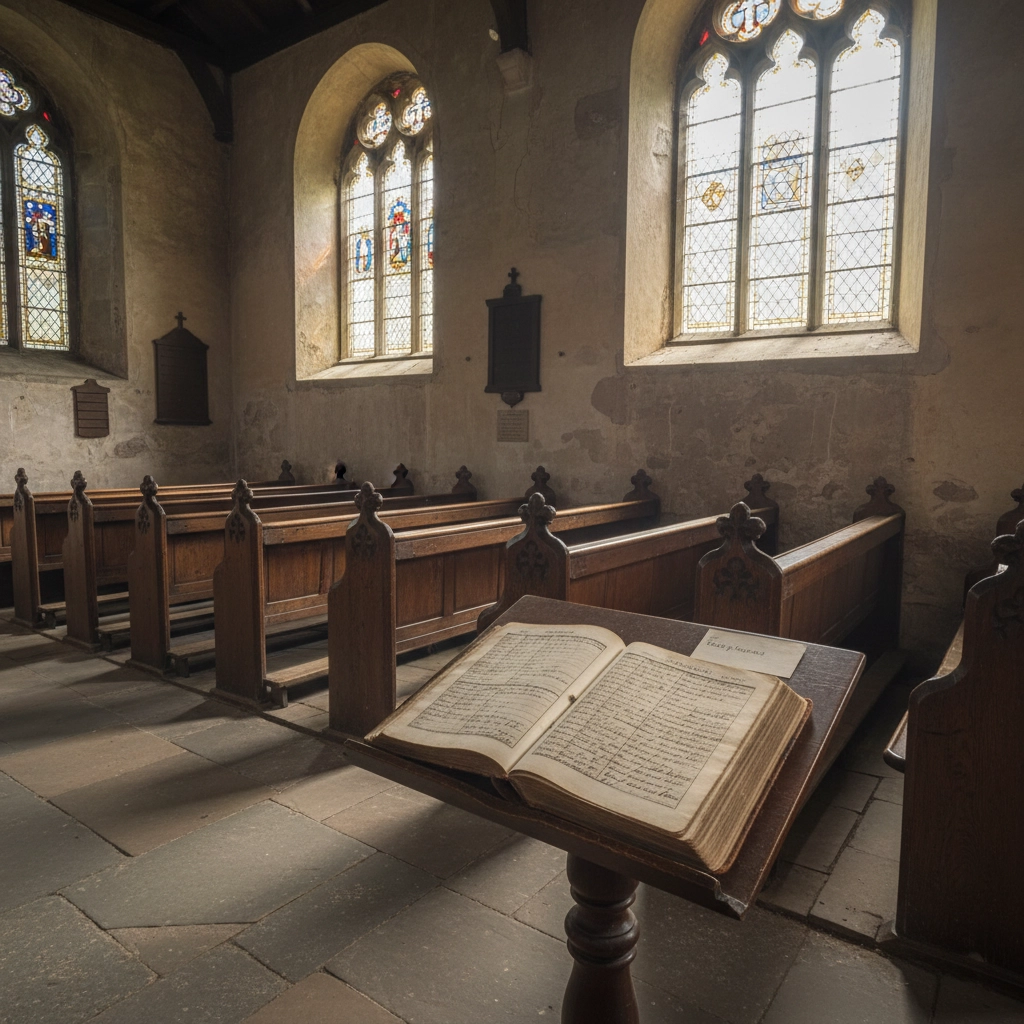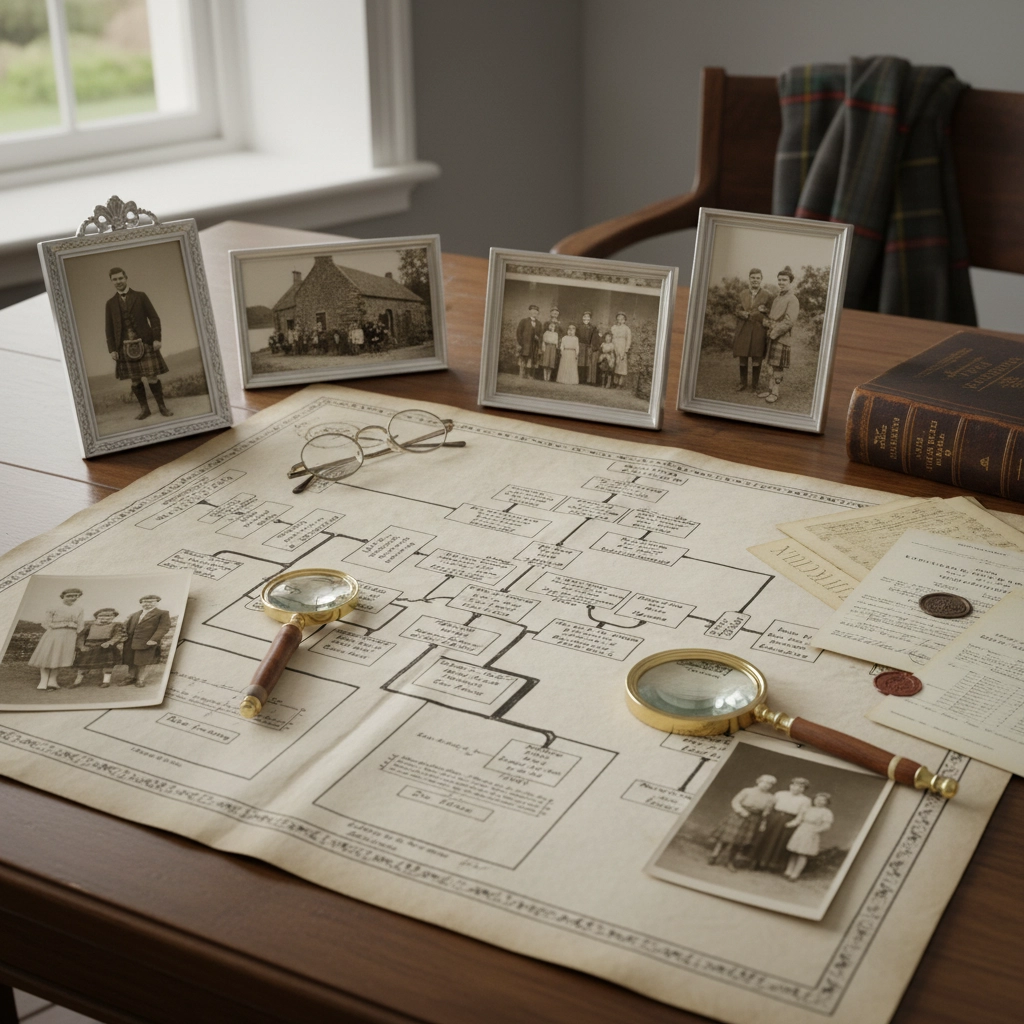DNA testing has revolutionised genealogy research, particularly for those of us tracing Atlantic Canada roots. Whether you're hunting down Acadian ancestors, following Maritime migration patterns, or trying to connect with distant Nova Scotia cousins, DNA can be your secret weapon. But here's the thing: I see the same costly mistakes over and over again, and they're keeping people from discovering their true Atlantic Canada connections.
After years of helping families piece together their Maritime heritage, I've noticed that the difference between DNA success and DNA frustration often comes down to avoiding these five critical errors. Let's dive in and make sure you're not sabotaging your own family history journey.
Mistake #1: Contaminating Your DNA Sample (And Why This Matters More in Atlantic Canada Research)
Picture this: you've finally decided to take that DNA test to confirm your suspected Acadian lineage. You're excited, maybe a bit nervous, and you grab your morning coffee whilst reading the instructions. Big mistake.
Sample contamination is the most preventable yet common error in DNA testing. When you consume food, beverages, smoke, or chew gum within 30 minutes of collecting your sample, you're introducing foreign genetic material that can skew your results. This might seem minor, but for Atlantic Canada research, where precise ethnic percentages can distinguish between French Acadian, Scottish Highland, or Irish heritage, contamination can muddy the waters significantly.

The Atlantic Canada Connection: Maritime families often have complex mixed heritage: Acadian French, Mi'kmaq First Nations, Scottish, Irish, and English. Contaminated samples can blur these distinct genetic signatures, making it harder to identify which cultural communities your ancestors belonged to.
The Fix: Fast for at least 30 minutes before collection. No exceptions. Rinse your mouth with water, wait, then collect your sample exactly as instructed. If you're testing multiple family members (brilliant strategy, by the way), handle one kit at a time in separate areas to prevent cross-contamination.
Mistake #2: Playing Fast and Loose with Sample Handling
Here's where things get properly frustrating. You've followed the contamination rules perfectly, but then you accidentally mix up sample tubes between family members. This happens more often than you'd think, especially when enthusiastic families decide to test everyone at Christmas dinner.
Data entry errors and sample mislabelling represent the most frequent mistakes during DNA collection. I've seen cases where a father's DNA results came back under his daughter's name, completely confusing the family tree and leading to months of unnecessary confusion.
The Atlantic Canada Connection: Maritime families are often close-knit, with multiple generations living nearby. This makes group testing sessions tempting, but also increases the risk of mix-ups. When you're trying to distinguish between branches of large Acadian families or trace which MacLeod cousin connects to which Highland settlement, accuracy becomes absolutely crucial.
The Fix: Open one kit at a time. Complete the entire process: registration, collection, sealing, posting: before touching the next kit. Use different rooms if possible. Create a simple checklist: "Name matches tube, tube matches envelope, envelope matches shipping label."
Mistake #3: Going Solo When You Should Be Building a Team
This is where I see people really limit their potential discoveries. They test themselves and wait for magic to happen. But DNA genealogy isn't a solo sport: it's a team effort.
Not testing known relatives or failing to upload their existing DNA results is like trying to solve a jigsaw puzzle with only half the pieces. Every additional family member you include dramatically improves your ability to identify shared ancestors and understand your Atlantic Canada connections.

The Atlantic Canada Connection: Maritime communities were often small and interconnected. Your third cousin in Yarmouth might hold the key to identifying your Lunenburg German ancestors, whilst your aunt's DNA could reveal the missing link to your Cape Breton Scottish roots. These connections often span the entire Atlantic region.
The Fix: Start a family DNA project. Approach parents, aunts, uncles, and willing cousins about testing. If they've already tested elsewhere, many platforms accept uploads from other companies. Even one additional known relative can transform your results from confusing to conclusive.
Mistake #4: Putting All Your Eggs in One Basket
Different DNA testing companies maintain entirely different databases. Your Prince Edward Island cousins might only show up on AncestryDNA, whilst your Newfoundland connections could be concentrated on 23andMe or MyHeritage. Relying on a single platform is like fishing in only one section of the harbour when the best catches are spread across multiple areas.
The Atlantic Canada Connection: Atlantic Canada has a unique demographic history. Early Acadian settlers, Scottish Highland clearances, Irish famine refugees, and Maritime migration to New England created scattered family networks. These diverse communities may have gravitated toward different DNA testing platforms, meaning your matches could be fragmented across multiple databases.

The Fix: Upload your raw DNA results to multiple genealogy platforms. MyHeritage, FamilyTreeDNA, and GEDmatch all accept uploads from major testing companies, often for free or a small fee. This dramatically expands your potential match pool without requiring additional testing.
Mistake #5: Flying Blind with Analysis Tools
You've got your results back, you're looking at hundreds of DNA matches, and you're completely overwhelmed. You start clicking through chromosome browsers without understanding what you're looking for, or you assume that larger shared DNA segments automatically mean closer relationships.
Misusing analysis tools and misinterpreting results is perhaps the most frustrating mistake because you have all the data you need: you're just not using it effectively. This is like having a detailed map but not knowing how to read the compass.
The Atlantic Canada Connection: Atlantic Canada genealogy often involves complex relationship networks. Endogamous communities (where people married within small geographic or cultural groups) can make DNA analysis particularly challenging. Acadian families, isolated island communities, and tight-knit Scottish settlements all created genetic patterns that require careful interpretation.
The Fix: Take time to learn the basics of DNA analysis. Understand what centiMorgans mean, learn to use chromosome browsers effectively, and don't rely solely on automated ethnicity estimates. Consider taking an online DNA course or joining Atlantic Canada genealogy Facebook groups where experienced researchers share knowledge.

Maximising Your Atlantic Canada DNA Success
Beyond avoiding these mistakes, here are some specific strategies for Atlantic Canada research:
Test the Eldest Generation First: Your grandmother's DNA contains genetic information that might be diluted or lost in younger generations. Atlantic Canada families often have excellent oral histories: combine DNA with family stories for maximum impact.
Understand Migration Patterns: Atlantic Canada families rarely stayed put. They moved from Acadia to Louisiana, from Nova Scotia to New England, from Newfoundland to Ontario. Your closest DNA matches might be thousands of kilometres away from your ancestors' original settlements.
Embrace the Complexity: Atlantic Canada heritage is beautifully complex. Don't be discouraged if your results show unexpected ethnicities or confusing family connections. This diversity is part of your story.

The Laboratory Quality Factor
Not all DNA testing labs maintain identical standards. Ensure your chosen company uses accredited facilities with proper protocols and regularly calibrated equipment. Whilst DNA testing is 99.999% accurate at quality labs, substandard facilities can produce errors that completely derail your research.
For Atlantic Canada research specifically, choose companies with strong databases in North America and Europe, since these regions contain most Maritime DNA matches.
Moving Forward with Confidence
Remember, uncovering your Atlantic Canada family history is a journey, not a sprint. These DNA mistakes are completely avoidable with proper planning and realistic expectations. Every corrected error brings you closer to understanding your Maritime heritage and connecting with cousins you never knew existed.
The Atlantic Canada story is one of resilience, migration, and interconnected communities spanning centuries. Your DNA holds pieces of this remarkable narrative: don't let simple mistakes prevent you from discovering the full story.
Whether you're just beginning your DNA journey or looking to solve existing mysteries, avoiding these five common mistakes will dramatically improve your chances of success. Your Atlantic Canada ancestors are waiting to be found: make sure you're giving yourself the best possible chance to find them.
Ready to dive deeper into your Atlantic Canada DNA research? Every family story matters, and every connection brings us closer to understanding the rich tapestry of Maritime heritage that makes this region so special.









